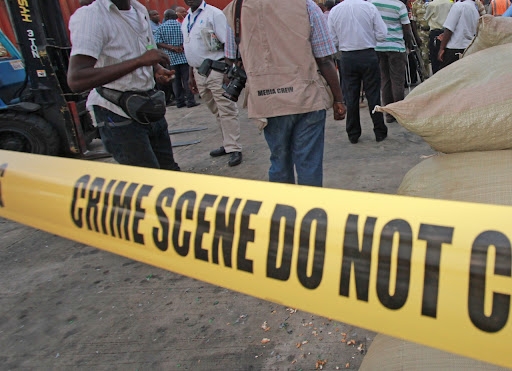The escalating cases of terror attacks across the region have once again elicited debate about the growing threat of radicalisation.
For most Kenyans, there been a false conflation between Islam and violent extremism, given the various metaphors that terror groups such as al Shabaab have employed to manipulate public perceptions and attract sympathy to their cause.
In an effort to fill some of these knowledge gaps, the Reinvent Programme through the countering violent extremism workstream commissioned two studies covering northern and coastal counties of Mandera, Garissa, Marsabit and Isiolo Lamu and Tana River.
The research provides in-depth understanding of different religious schools of thoughts, and the influential religious movements shaping religious discourse and peacebuilding. Based on mapping of major influencers, the study can help in formulating appropriate programming activities to constrict the space in which violent extremist groups operate.
Three aspects stand out in the twin studies.
First, Islamic ideologies in northern Kenya are highly diverse. Previously predominant Sufi orders have now become the minority. Of the four Sunni Islam schools – Hanafi, Maliki, Hanbali and Shafii – the latter is prominently followed.
Although embryonic Muslim Brotherhood cells are emerging through development-oriented organisations in some of the major towns across both the northern regions, Tablighi Jamaat, an Indian originated apolitical missionary movement, is also highly active across the entire region.
Similarly in the counties of Lamu and Tana River, most of the contemporary Islamic movements are transnational in nature and include Tabligh Jamaat, Hizb ut Tahrir, the Muslim Brotherhood, the Jamaat Answari Sunnah and Salafi Jedida.
However, these movements are rarely identifiable under their specific names or groupings within these communities, and their spread is not always visible. Most are Sunni and are vaguely distinguished from one another based on theology and practice. They contribute to the propagation of Islam and respond to the external challenges facing the religion.
As in other parts of the country, violent jihadi groups have tapped into existing structural grievances and individual vulnerabilities to recruit and radicalise local youths.
Secondly, the study found that many scholars in the areas, studied in Saudi Arabia, Sudan and Egypt. Others attended local Islamic universities and colleges linked in some way to the Gulf states. Over the last four decades, Gulf charities have been responsible for the establishment of dozens of mosque and madrasa complexes that dot the region. This massive investment in religious education and social programmes entrenched a puritan and conservative understanding of Islam that mirrors the outlook prevalent in the contemporary Middle East.
A majority of scholars maintain these transnational networks for further learning and networking. Some still receive external support for their Islamic educational and religious institutions.
Saudi educated scholars on the Kenyan Coast often criticise existing Sufi practices for their religious innovations (bid’ah). While there were no active conflicts within the different Islamic schools of thought (Madhabs), emerging tensions were identified between groups based on religious practice.
Terms like ‘Salafist’ (a branch of Sunni Islam advocating that Islam should only be practiced as it was by the Prophet Muhammad and the immediate generations that followed) and ‘Wahhabi’ (a related movement associated with the 18th Century Hanbali scholar, Muhammad ibn ‘Abd al-Wahhab Islam) are misused in a derogatory way to describe scholars who stick to rigid interpretations of the Quran and Sunnah.
Third, the studies identified that support for violent extremist groups among the Northern and Coastal scholars is relatively uncommon. Violent jihadism in Kenya was not seen to be an outgrowth of local waves of Salafism. Rather, factors such as proximity to Somalia cross border cultural and religious ties, financial incentives for recruitment and the ability of jihadi cells to operate and intimidate vocal anti-jihadi groups account for the emergence of the problem.
This does not imply that there are no religious scholars who have either joined terrorist groups such as al Shabaab or have been accused of being its recruiters, but they are certainly in the minority.
The study also highlighted the importance of government and community actors to conduct comprehensive mapping of religious actors – prior to the initiation of religious or ideologically-oriented Prevention and Countering Violent Extremism (P/CVE) interventions.
Intra-faith CVE interventions must explore how Salafism can be embedded within transformational change along with Sufism and other groups. This means countering violent extremism programmes should be designed to appreciate shared values and not target one specific school of thought at the expense of another.
Locally accepted religious leaders are crucial in efforts to counter radical texts and propaganda. Intra and interfaith interventions in minority dominant Muslim communities often intersect with governance and marginalisation issues. Therefore, addressing grievance and marginalisation must be dealt with for a fruitful inter religious and community peacebuilding processes.
It is imperative that those interested in carrying out practical counter violent extremism interventions appreciate and understand the long histories of interactions between these Muslim majority counties and the wider Muslim world, as well as the diverse religious movements and ideologies that characterize, influence and are ascribed to by residents.
Dr Badurdeen is a lecturer at the Technical University of Mombasa, while Dr Wario serves in the Religious Studies Faculty at Egerton University. Comments in this article do not represent the Technical University of Mombasa, Egerton University nor the REINVENT Programme. For more information on the two studies, please email [email protected]











